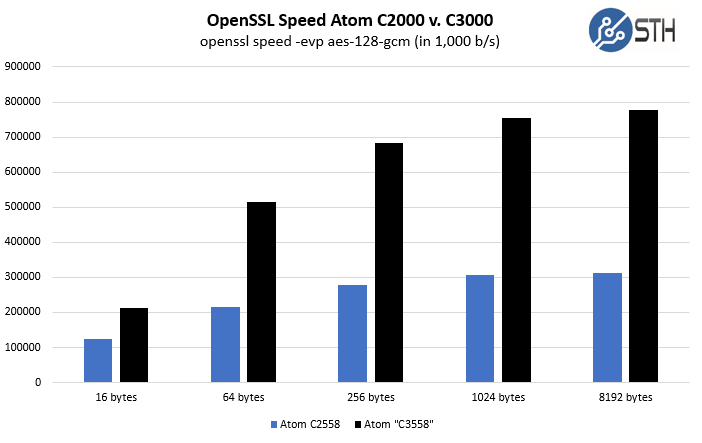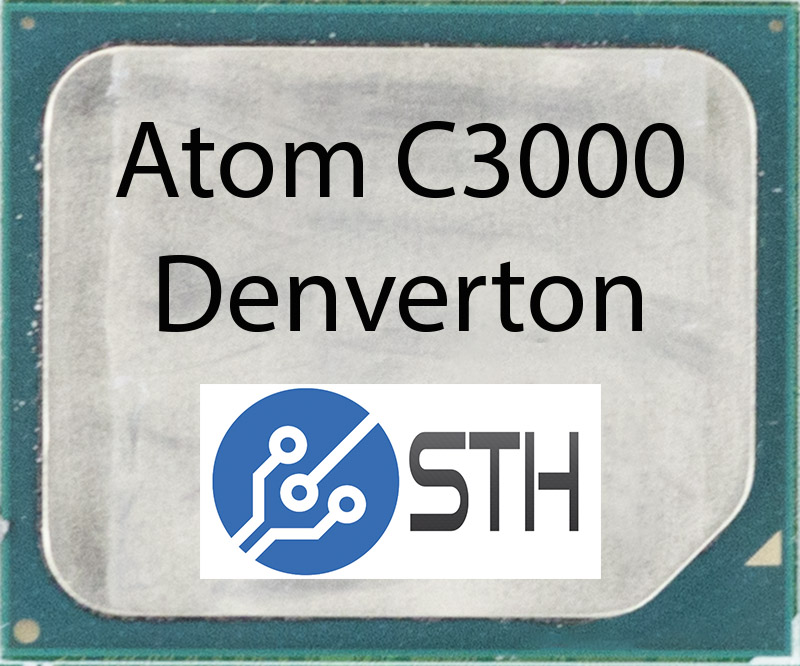Today we are treated to a number of network-related announcements from Intel. STH has already published the world-first independent Intel Atom C3000 benchmarks. We also found leaked 16-core benchmarks online. Today Intel is (finally) making the first major “Denverton” series announcement since the quiet release of the first SKU in January. As you will see, these details match our expectations from our what to expect from Intel in 2017 piece.
We are going to have a copy of the release. Since we have already started to publish benchmarks and much of the information released below, we are going to comment on a few highlights. First and foremost, the availability is listed as production in mid-2017 which means that we would not expect to see platforms for a few months after production. Denverton is still not quite here. Second, we are seeing major pushes towards DPDK and new QuickAssist with the Intel Atom C3000 series. Our benchmarks confirm that the CPUs can achieve over the company’s claimed 2.3x performance boost, especially in AES accelerated workloads. Finally, you can see that the marketing of these systems is geared toward network function virtualization, network appliances, and storage appliances. Our 2017 theme of 10GbE in new platforms is holding true with the Intel Atom C3000 series.

Here is a copy of the information we received from Intel on Denverton with some light editing for readability.
Designed to provide performance in dense, low-power network, storage, and Internet of Things products, the new Intel Atom C3000 product family provides up to 16 compute cores for an up to 2.3x increase in compute performance versus the previous-generation Intel Atom processor C2750, operates as low as 8.5 watts, and provides up to 19 Mpps of Layer 3 forwarding.
Unique features for the intelligent network edge in segments such as radio access, customer premise equipment (CPE) and security appliances give communications service providers (CoSPs) the ability to take advantage of deploying services at the network edge with software-defined network (SDN) and network functions virtualization (NFV). The processors will feature integrated Intel QuickAssist technology, enabling CoSP’s to help securely process and compress data at the network edge at up to 20 Gbps.
Low thermal design points (TDPs) down to 8.5 watts and extended temperature ratings support passive cooled designs that can work in extreme cold to extreme hot environments. Error-correcting code (ECC) memory delivers accurate data results in environments such as manufacturing floors.Intel Atom C3000 Key Features
- Thermal design points down to 8.5 watts to enable maximum energy efficiency.
- Enhanced performance from 2 to 16 cores and frequencies from 1.5 Ghz to 2.2 Ghz.
- Built-in hardware virtualization to enable dynamic provisioning of services as communication service providers extend network functions virtualization to the network edge. Now including Intel VT-d.
- Intel x86 64-bit software support for scalable performance and broad application compatibility.
- Integrated Intel QuickAssist technology with up to 20 Gbps of compression/encryption throughput.
- 4 x 10 GbE integrated Intel Ethernet to enable high-speed connectivity to the network.
- Error-correcting code (ECC) memory for data integrity and system reliability through automatic data correction.
- Flexible I/O lanes providing up to 16 SATA 3.0, 16 PCIE3, and 4 USB 3.0.
- Extended temperature range and long-life support for dense network, storage, industrial IoT and autonomous driving environments.
- DPDK (Data Plane Development Kit) helps to develop efficient applications for networking workloads.
- SPDK (Storage Performance Development Kit) helps to develop efficient applications for storage workloads.
Intel Atom C3000 Availability
The Intel Atom processor C3000 product family is currently sampling in the first half of 2017 and will move into production by mid-2017.
(Source: Intel)





When will we hear more denverton news?
Constantly pushed.